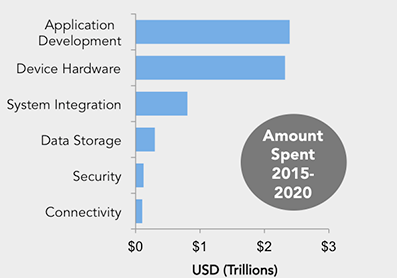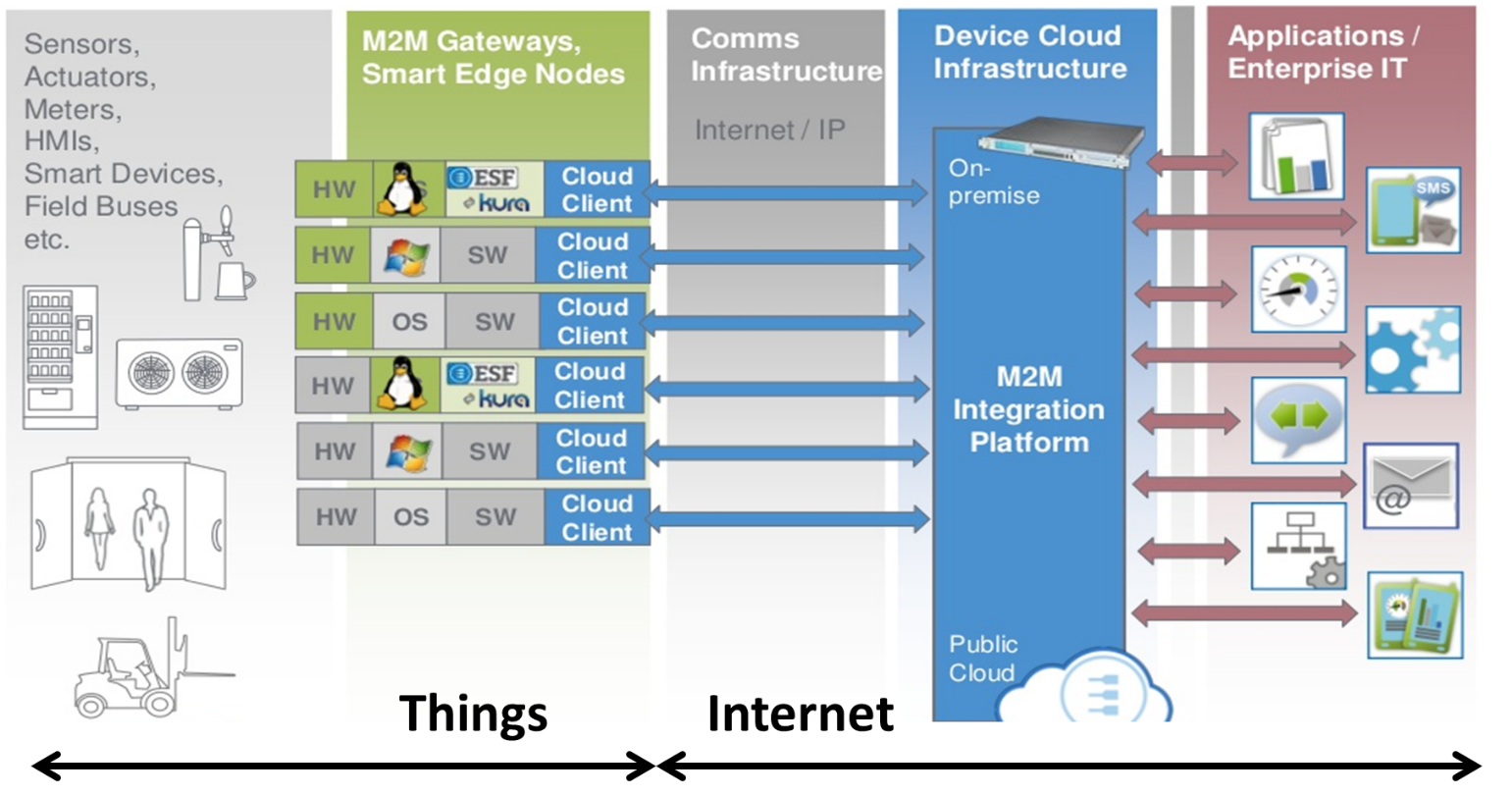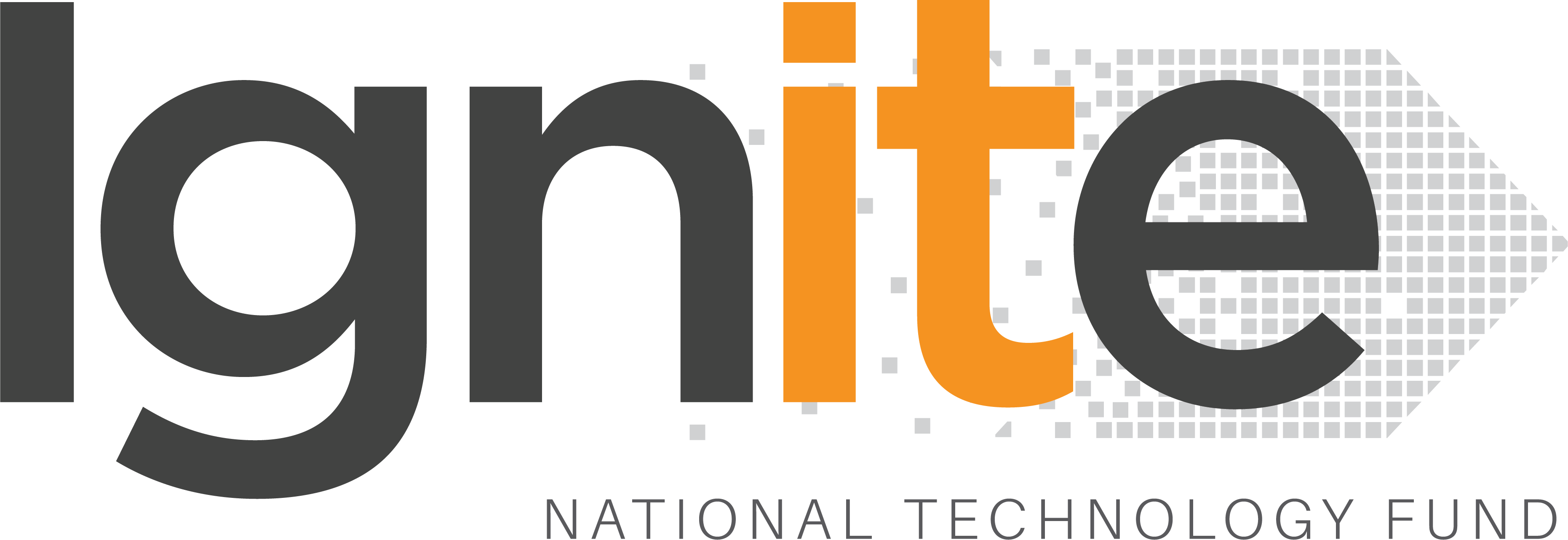The ‘I’ in the Internet of Things (IoT) is quite often sidelined in the discussion about this newest of buzz-words. Most discussions about IoT entrepreneurship revolve around novel solutions to problems and challenges within our society. Unlike the motivational phrase, “There is no I in teamwork,” I would argue that this “I” plays an integral role in realizing the business potential of IoT.
The IoT business case
The current hype around IoT stems from the estimates of how many connected sensors/devices will soon be present. Intel predicts a mind-boggling number: 200 billion devices by 2020 – spawning applications in diverse areas such as Business/Manufacturing, Healthcare, Retail, Security and Transportation.

| Figure 1: Where is the IoT investment going (Src: Business Insider) |
Business Insider predicts that IoT applications will provide $13 trillion revenue on an investment of about $6 trillion by 2020. These numbers are lucrative, but what might be intriguing for most is the nearly equal investment in device hardware as compared to application development (approximately $2.2 trillion each).
Clearly, all of this will not be going into just writing Android apps, or web front-ends in Angular. I would argue by saying that this investment will be going into building new infrastructure and technologies that will thereby enable rapid development of applications for hardware vendors.
The Things and the Internet
The future of all IoT applications will consist of a very clear split between the ‘things’ component and the Internet/Cloud component. While investment in devices and their local interactions (BLE, Zigbee, etc.) will remain important, I believe hidden potential on the Internet/Cloud side remains important – especially in Pakistan’s context where manufacturing takes a backseat due to existing structures. The rest of this article will briefly touch on these oft-ignored, software-oriented aspects.

Figure 2: The architectural division of IoT (Src: EuroTech)
As Figure 2 shows, the gateways or edge devices will need to send data to the cloud/internet over some sort of communication infrastructure. The communication infrastructure silo includes a slew of new competitive technologies for low-cost/low-energy WAN backhaul to a cloud platform. These include independent consortiums like SigFox, LoRa/LoRa-WAN, as well as telecom-backed technologies such as NB-IoT and NB-LTE-M. Follow this space regarding which approach (independent vs carrier-backed) survives, and whether there is space for both.
These technologies, along with 5G and NFV, will provide an infrastructure that will enable appropriate slicing of our upcoming telecom infrastructure to be utilized for the varied demands on the WAN (any combination of low-bandwidth, large-volume, or low-latency) of varied IoT applications. Here, there is also a need to keep looking at the NFV orchestration space that will drive the choice of performant SDN as well as delivering the provisioning of IoT-specific network slices.
The Age of Platforms
Once we get the data to the cloud, a whole new area of IoT platforms become a hot bed of development activity. These IoT platforms are built to withstand ingesting millions of connections from connected devices, transform MBs of data and then store it in databases that scale into petabytes. This ‘Big Data’ should then be available to run analytics and BI (Business Intelligence) above them. Finally, the ability to set up connections with devices installed at a certain site, having them isolated between different applications/tenants, while providing usable APIs to access device data and modify configuration all form the expectation of robust and efficient IoT platforms.
Within this space, we have (much like public and private cloud offering) public platforms like AWS IoT, Google IoT Solutions, Azure IoT Suite, ThingSpeak, DeviceHive; and some private cloud offerings such as Kaa, Lelyan. Each platform has a slightly different focus; some supporting a limited set of devices while others are built around specific endpoint devices.
The IoT platforms abstract a way, using APIs, where a great deal of complexity is required to seamlessly scale the size of data coming from IoT devices. They also introduce innovative ways to program IoT applications which any competent developer needs to keep track of. For example, the idea of server-less computing (AWS lambda functions) allows code to run based on an event only. Such an approach minimizes the computational requirement at the cloud hosting end, thus providing a more cost-effective approach than spawning VMs. Another approach is to provide stream processing capabilities that transform messages being pushed from edge devices to map into application-specific schemas.
These platforms reduce the challenges that come with building scalable and robust systems. This ease of development is exactly the boon needed to enable growth in the application development for any IoT vertical. It will allow enterprises and startups to focus on the uniqueness of the IoT application and its business value; allowing for a fail fast approach for IoT applications – much like the existing cloud allowed for web-application innovation to be accelerated.
Conclusion
A great deal of activity and investment in the IoT space belongs to the cloud-side of IoT application. We should be aware of this opportunity as developing software for IoT applications will remain a quicker way to bring value. Watch this space for great ‘things’!



